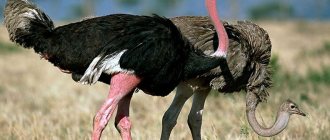- Reports
- Animals
- Fox
The fox is a predator. Belongs to the canine family. Different species of foxes live in many parts of the world from Europe to Africa. Weight can reach 10 kilograms. The fox has an elongated muzzle, pointed ears, and a very fluffy tail. The fox's paws are thin and strong, they help it move silently. The ears are able to distinguish quiet sounds, which is useful during hunting and for self-defense. And the tail helps balance when moving and warms in winter.
Foxes have good night vision, but they are poor at distinguishing colors. Outwardly, a fox may resemble a dog, but its habits are more cat-like. In addition to red color, fox fur can be black, brown, or silver. It changes its coat in summer and winter, and the winter coat is more beautiful, fluffy and thick.
The fox hunts small rodents such as mice and gophers. In winter, she can easily get them out from under the snow. Many people think that foxes hunt hares. In fact, this is a myth, because the hare is a fast animal, and the fox, due to its short legs, cannot keep up with it. Foxes can accelerate up to 50 km/h, but cannot run for a long time and get tired quickly.
Foxes also eat birds and eggs from nests, as well as fruits and berries. More often, hunting takes place at night, since the fox sees well in the dark and has developed hearing and touch. The fox does not make provisions for the winter and eats its prey right away, and if it is not hungry, it plays with it, as cats do.
Foxes make their home in burrows, which are usually located on the hillside. Inside the burrow there are many tunnels leading to the family nest. There are also always multiple inputs and outputs. Foxes sleep in a hole, and their sleep is very sensitive, and they raise their offspring.
During the mating season, several males fight for the fox. When she makes a choice, they create a pair and together make a home for themselves, hunt and raise puppies. Pregnancy lasts 2 months, litter appears once a year. Puppies are born without hair, deaf and blind. But after 14 days they begin to see and hear. They feed on milk.
After a month and a half, the babies leave the hole for the first time, where they learn to hunt together with their parents and get used to eating meat. In natural conditions, foxes live for about 10 years, but in domestic conditions or in a zoo they can live up to 20-25.
Fox: general characteristics
Foxes represent a group of predatory mammals and are part of the canine family, being close relatives of wolves and dogs. They are small in size, their height does not exceed 50 cm, and their weight ranges from 6 to 10 kg.
The fox has a beautiful, spectacular appearance
These are extremely beautiful and graceful animals, and their slender elongated body, narrow muzzle and long thin legs give them special grace. But the main source of pride for foxes is, of course, their long tail covered with luxurious fur. By the way, animals do not need their tail for beauty; it performs an important function as a natural “rudder,” allowing them to deftly maneuver and change direction while running.
There are several genera in the fox family, which are divided into more than 50 varieties. In general, all animals have a typical fox appearance, but may differ in size, color, tail length and ear shape.
The most common color of foxes is red, but there are varieties with sandy and brownish-gray fur. Predators living in warm regions have a brighter color, while animals from northern latitudes have a dull, inconspicuous coat. But, regardless of color, all foxes have a distinctive feature: a white tip of the tail and dark ears.
Foxes have well-developed all senses, and when hunting they rely on their keen vision, hearing and excellent sense of smell. Red animals are very fast and agile, and can reach speeds of up to 50 km per hour. It is not difficult for foxes to cross the river; they generally swim well and even fish.
The lifespan of foxes in the wild ranges from 3 to 10 years. But in captivity, their lifespan doubles, and they can even reach the honorable age of 25.
Elena
Ask a Question
Question to the expert
Do foxes hibernate in winter?
No, these animals are active throughout the year. On the eve of winter cold, their fur becomes thicker and fluffier, which allows foxes not to freeze even during severe frosts.
Habits
Why is it that in all fairy tales the fox is smart, cunning and insidious, dexterous and smart? Because that's what she really is. One can only wonder how this animal knows how to confuse its tracks, deceive game, pretend and deceive. Although you shouldn’t attribute any incredible abilities to the fox.
Intelligence and cunning are just an animal instinct that nature endowed her with so that the fox could survive.
If this message was useful to you, I would be glad to see you in the VKontakte group. Also, thank you if you click on one of the “like” buttons:
Habitat
Foxes are widespread throughout the globe and are found on almost all continents. These animals inhabit Europe, most of Asia, and are found in northern Africa and North America. The red creatures have even successfully adapted to the arid climate of Australia, where they were brought in the 19th century to fight rabbits and small rodents.
Foxes skillfully adapt to any habitat
Foxes live in many geographical areas, and feel comfortable both in the cold tundra and in the hot desert. They live in forest plantations, plains and steppes, and can settle in mountainous and coastal regions. The only thing these predators don’t like is the humid, stuffy tropics, so you won’t find them in difficult jungles and swampy forests.
Furry animals prefer open areas, and are not too afraid of the proximity of people. Foxes settle near landfills and near populated areas, and even venture into large cities to profit from scraps from garbage containers, or to hunt rodents in the park.
Where live
Foxes can be found throughout the northern hemisphere of the Earth, even in North Africa.
They dig holes for themselves with several entrances and exits and underground tunnels that lead to the nest.
Sometimes they occupy other people's homes, for example, badger holes. Here they breed and hide from danger. They spend a lot of time in the den in an open place, under a bush, in the grass or snow. They sleep very lightly.
What do foxes eat in the wild?
Unlike many predators, foxes rarely have to go hungry. Although they are carnivores and feed primarily on small rodents, their diet also includes insects, reptiles and even many types of plants. So, if there is a shortage of mice and hares, the fox will calmly dine on a frog, a fat larva or wild berries.
The fox went hunting
In especially unfavorable periods, red-haired creatures look for scraps of other predatory animals, picking up the remains of the meals of wolves and bears, and do not even disdain carrion.
What do foxes eat
Basically, foxes hunt small animals: mice, gophers, wild hamsters. But depending on the time of year and habitat, their diet also includes:
Recommended by topic
Panda Lynx Lion
- Hares and wild rabbits;
- Birds and bird eggs;
- Crayfish and fish (foxes living in Canada happily eat salmon that have washed ashore after spawning);
- Worms, various beetles and their larvae;
- Lizards, frogs;
- Berries: blueberries, strawberries, raspberries;
- They will not refuse fruits, for example, pears and grapes;
- Foxes also love to eat the milky germs of cereals growing in the fields, they especially like oats.
Red raptors are accused of stealing poultry, and they do sometimes raid chicken coops. But this happens when there is a catastrophic shortage of food in the forests, and then starving foxes have to make their way to nearby villages to steal a couple of chickens or ducks.
Hunting method
Fox hunting is not just about getting food, but an entire art. They have a whole arsenal of tricks and techniques that foxes use depending on the potential prey. These animals are extremely observant and smart, in addition, they have excellent visual memory, and know their own hunting area to the smallest detail.
Going on a night hunt, the fox leisurely walks around its property, listening to every rustle. Thanks to her excellent hearing, she can hear the squeak and fuss of a small rodent at a distance of 100 meters, and, focusing on the sound, determines the shortest path to the intended prey. The red creatures move insinuatingly and silently, and quickly attack the gaping animal. And in winter, these predators hunt mainly for voles, catching them directly from holes covered with snow. Smelling a rodent, the fox quickly dives under the snow cover, grabbing its rightful trophy. By the way, this method of winter fox hunting even received the scientific name “mousing.”
A fox dives into a snowdrift after a vole
Foxes also study the habits and weaknesses of their victims. A striking example of how resourceful foxes are is their hunting of hedgehogs. The prickly animal immediately curls up into a ball at the sight of a predator, but the red-haired rogue does not get lost and rolls the lump studded with needles to the nearest body of water. Then the fox pushes the hedgehog into the water, it instinctively turns around, revealing its unprotected abdomen, and becomes easy prey for the insidious hunter.
When catching birds, foxes also use very cunning tactics, or rather, even three. The first is that the predator walks among the birds, pretending that she is absolutely not interested in them. The birds get used to the proximity of the red beast and lose their vigilance, after which the fox, with one elusive movement, grabs the nearest feathered game. With the second method, the fox demonstrates excellent acting skills, choosing an open clearing and pretending... to be dead. Near the “lifeless body” crows and magpies gather, which at first timidly walk in circles, and then the most courageous individuals approach the fox, and the cheat only has to seize the moment and catch the bird that has lost its caution. Well, to hunt wild geese, foxes even team up in pairs, and one of them rushes into the very thick of the birds, creating panic among them, while the second attacks the birds from ambush.
Lifestyle of foxes
Unlike most members of the canine family, which tend to form packs, foxes prefer to live and hunt alone. The only exception is the periods of raising offspring, when red predators form a mating pair and jointly care for the cubs. Foxes also enter into temporary alliances with their relatives to hunt large game birds, for example, geese and black grouse, or secretly raid a rural chicken coop.
Lifestyle of foxes
The activity of foxes does not depend on the time of day; they can go out in search of food both during the day and at dusk. And yet, they often hunt under the cover of darkness, and when the first rays of the sun fall to the ground, they return to their shelter. During the day, foxes hunt only when absolutely necessary: when they were unable to catch anyone at night, or they need to provide food for growing cubs.
The fox indulges in a day's rest after a grueling hunt
Each fox has its own territory, which contains its hunting grounds and several hidden shelters. Interestingly, red animals do not use holes as a permanent home. They set up underground lairs only for the period of raising offspring, or as backup shelter options. And so, foxes do not have a specific place to rest; they can settle down for the night in an old hollow, in a niche in a rock, or even just among lush thickets of grass.
Foxes rarely conflict with their relatives, because these animals are very tactful and try not to violate the boundaries of other people's possessions. Animals ignore this rule only in case of a shortage of food, and then a quarrel arises between the furry owner of the territory and the uninvited guest, which develops into a fierce fight.
How do fox holes work?
Although foxes are excellent at digging holes, they rarely bother themselves with such an activity. Cunning animals prefer to occupy empty shelters of other forest inhabitants. Having discovered an abandoned hole, the fox begins to equip it, expanding the premises, and adding several emergency exits.
Sometimes red animals move into a den that has an owner. For example, foxes live in the same hole with a badger, occupying the next chamber. True, badgers are not too happy with impudent tenants, because these clean animals cannot stand the pungent smell emanating from the fur of foxes. Therefore, the badger often leaves his habitable dwelling to the red cheat, and he digs a new hole, trying to choose a place away from representatives of the fox family.
On the personal territory of foxes there are several shelters, and these are not only underground burrows, but also deep rock crevices, cave grottoes and depressions in rocks. Interestingly, some dens can be connected by underground passages, which allows the animals to successfully hide from hunters and their dogs.
Lifestyle
Foxes live in pairs or families. They usually lead a sedentary lifestyle, occupy an area where they hunt and make a home for themselves to spend the night and breed. In deserts and tundras, where they have to travel long distances in search of food, foxes migrate from one place to another.
Foxes dig deep holes in the ground with narrow passages and a wide nesting chamber. They usually make their burrows on the slopes of ravines or hills, protected by dense grass and bushes. Often not one, but two or even more passages lead to the nesting chamber. This allows foxes to escape from their pursuers in case of danger.
The fox is a very careful and intelligent animal; it easily evades pursuit, skillfully confusing its tracks and resorting to all sorts of tricks. The fox has a good sense of smell and hearing, thanks to which it easily detects its prey. The fox is capable of making sounds reminiscent of the yapping bark of a dog.
Reproduction and raising of offspring
Females reach reproductive age at 1.5 years, males become sexually mature at 2 years of age. The mating season of foxes begins in January and lasts until March, so that the birth of babies falls during the warm season. In unfavorable periods, when there is little game around, animals may not reproduce at all, and in hungry years, about 60% of females are left without offspring.
To attract the attention of the opposite sex, females leave discharge everywhere from a gland located near the tail. The smell of fox marks is not sharp and unpleasant, but resembles the aroma of violets.
Natural enemies of foxes
Foxes are careful and prudent animals, because they have to share territory with large and formidable predators. They have plenty of enemies in the wild, but thanks to their cunning and resourcefulness, red-haired creatures often manage to escape from under the very nose of their pursuer.
Foxes cleverly hide from four-legged and two-legged hunters
None of the animals purposefully hunt foxes. But wolves and bears do not miss the opportunity to dine on a fox, of course, if they manage to catch it. Animals also have to be wary of representatives of the cat family. They can become a victim of an insidious lynx or a huge Amur tiger. Wolverines, who are reputed to be strong and dexterous hunters, will not refuse such prey. Well, young fox cubs often die in the sharp claws of birds of prey: eagles, hawks, eagle owls, large owls.
Jackdaws are non-lethal, but unpleasant enemies of foxes. If the red-haired rogue decides to catch this bird, the birds swoop down on her in the whole flock, and the predator has to flee. Moreover, the jackdaws pursue the fox for some time, tormenting it with deafening screams.
And yet, there is no more dangerous and evil enemy for the fox than man. For centuries, people have hunted these animals for their beautiful, valuable fur. Many hunting dog breeds were even bred specifically for fox hunting, and pointing dogs not only drove foxes under the hunter's shot, but also pulled the animals out of their holes.











